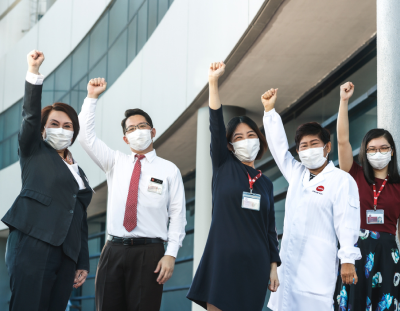Expanding the use of renewable energy
By harnessing renewable sources of energy, our goal is to reduce our environmental impact as we transition to a low-carbon economy. Solar energy is one of the greenest forms of renewable energy used to generate electricity that neither requires fuel nor releases harmful emissions.
We are committed to converting all available roof spaces across our facilities for solarisation where viable. In Singapore, we generate more than 10,000 megawatt-hours (MWh) of power annually. We aim to push our solarisation efforts to generate up to 15,000 MWh annually in Singapore.
We are also exploring other forms of sustainable energy resources, such as biodiesel, as an alternative to fuel vehicles that do not have a commercially available electric variant at the moment.
Accelerating electrification of our ground support equipment (GSE)
As part of our ongoing efforts to expand our electric fleet beyond tractors and forklifts, we are working with our partners to source for the electric or hybrid variants of GSE that suit our needs, and conduct onsite operational trials to assess the performance and compatibility of these vehicles with the unique requirements of airport operations.
The use of electric GSE also results in a healthier working environment with reduced air and noise pollution.
Accelerating electrification of our ground support equipment (GSE)
At our airfreight terminals in Singapore, we have installed 70 EV charging stations to charge 141 forklifts which are expected to be delivered by October 2022. The installation of three electric vehicle (EV) charging stations at AAT in Hong Kong enables the reduction in monthly fuel consumption of 150-200 litres of petrol per vehicle.
We will continue to engage in tripartite engagements on charging infrastructure to advance our electrification plan.
Optimisation of energy use
We upgrade our facilities or rationalise activities across our buildings, and introduce Industrial Internet-of-Things (IIoT) technology to track, optimise and reduce energy usage.
For example, we channelled funds from the sale of our Renewable Energy Certificates to replace 840 of the high-bay lights in our cargo warehouse in Singapore to energy-efficient LED lights, and abated 225 tCO2e in the form of energy savings. SATS TFK has converted 70% of existing lights to LED for all non-kitchen areas, resulting in a 34% reduction in energy consumption.
Optimisation of energy use
We also incorporate sustainability features into new buildings to create greater impact in the long term. For example, the SATS Food Hub, which will be completed in 2024, is being designed to achieve a Green Mark Platinum Super Low Energy (SLE) rating to achieve 60% energy savings from 2005 building codes. The Tianjin Central Kitchen, which will be completed in August 2022, has included multiple energy efficient initiatives to reduce the resource intensity of the facility.
























